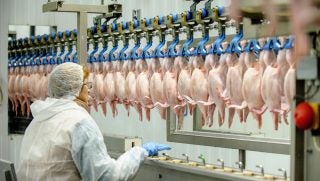Environmentally conscious consumers try to “buy local” when food shopping. Now, a study of food raised around Chicago has shown that buying local can’t provide all necessary nutrients for area residents, though it could fulfill their needs if some nutrients were supplied as supplements. The researchers report in American Chemical Society’s Environmental Science & Technology that urban agriculture made little difference in reducing overall land area, and thus distance, required to supply all nutritional needs.
As the U.S. population continues to flow to urban regions, consumers are moving farther from farms and croplands. This limits nutrient recycling and drives up emissions associated with transporting food. In addition, urban centers can develop “food deserts” where residents can’t purchase nutritious food close to home. One potential solution is urban agriculture, which repurposes space within cities — such as vacant lots and rooftops — to grow crops. Christine Costello and colleagues wanted to know the impact of urban agriculture on enabling people living within a range of distances from Chicago’s center to eat local food, yet meet their complete nutritional needs.
» Related: If the American farmer is here to address hunger, why are there still hungry people in the U.S.?
The team considered 28 nutrients, the amount of available land, a variety of crops and livestock, a range of crop yields and both conventional and urban agriculture in the analysis. They drew circles on a map around Chicago with increasing radii, up to 400 miles, the maximum distance the U.S. government deems “local.” Within that perimeter around Chicago, no mix of locally raised crops and livestock could satisfy all nutritional needs of the population.
However, if D and B12 vitamins could be provided as supplements, a radius as small as 65 miles was sufficient. Urban agriculture could provide an important nutritional benefit by increasing diet diversity and availability of fresh fruits and vegetables. But it would only slightly reduce the radius (and land area) needed for supplying nearly complete nutrition locally, the researchers say.
You can read the full study here.


